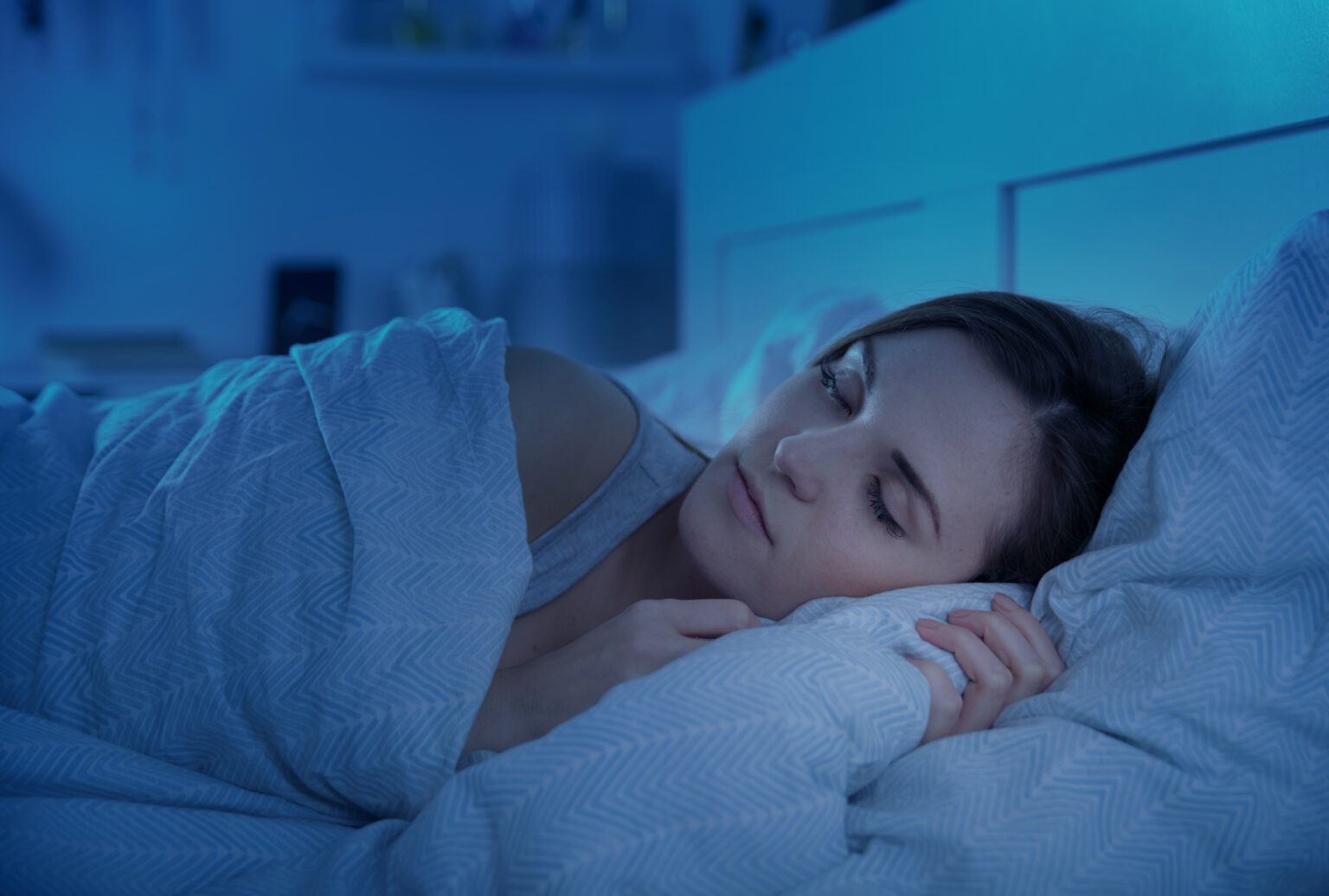Achieving quality sleep is essential for maintaining one’s health and well-being, and various factors contribute to this, including the ambient temperature of the bedroom. Research has consistently shown that the ideal temperature for sleep for most adults is between 15.5 and 21 degrees Celsius. This thermal range helps facilitate the body’s natural temperature drop during sleep, a critical aspect of the sleep cycle.
An optimal sleep environment is one where the temperature complements the body’s internal thermoregulation processes. Since the body’s core temperature naturally decreases to initiate sleep, a cooler bedroom temperature can enhance sleep quality by aligning with the drop in the body’s internal temperature. On the other hand, environments that are too warm or cold may disrupt sleep patterns and prevent individuals from reaching deep restorative stages of sleep.
Maintaining a bedroom temperature on the lower end of the 60 to 68 degrees Fahrenheit (15.5 to 20 degrees Celsius) spectrum is recommended to accommodate personal preferences and variances in thermal regulation among individuals. Furthermore, special considerations might be made for infants and toddlers requiring a slightly warmer sleeping environment, typically between 18 and 21.5 degrees Celsius, to ensure their comfort and safety throughout the night.
Understanding Sleep and Temperature
The interplay between sleep and temperature is underpinned by our body’s internal mechanisms that modulate core temperature and influence sleep stages.
The Science of Sleep
Sleep is a complex physiological state involving several stages. These include rapid eye movement (REM) sleep and non-REM (NREM) sleep, which encompasses light and deep sleep stages known as slow-wave sleep. Core body temperature is tightly linked to sleep regulation. A drop in core temperature is a signal that helps initiate sleep. Conversely, a rise in core temperature can lead to disrupted sleep.
Circadian Rhythms and Body Temperature
Circadian rhythms, or the body’s internal clock, orchestrate a cycle of bodily functions, including sleep and thermoregulation. Melatonin, a hormone associated with sleep onset, is released in response to darkness and a drop in body temperature. Typically, core body temperature decreases at night, reaching a trough in the early morning before awakening.
Thermoregulation and Sleep Quality
Thermoregulation plays a central role in maintaining sleep quality. Studies suggest that the optimal room temperature for a good night’s sleep is around 18.3°C, but preferences can vary from approximately 15.6 to 20 degrees Celsius. Maintaining this temperature range facilitates the natural decrease in core temperature necessary for progressing into deep or slow-wave sleep. Conversely, too hot or cold environments can disrupt the body’s ability to regulate temperature, impacting sleep onset and depth.
The Ideal Bedroom Environment
To achieve optimal sleep, one must create an environment that fosters restfulness through appropriate temperature regulation, subdued lighting, minimised noise, and comfortable bedding.
Bedroom Temperature
The temperature in a bedroom is a pivotal factor for restful sleep. Health experts suggest maintaining a temperature around 18.3°C (65°F) for optimal sleep quality. Notably, this may change slightly from person to person; however, the general range of 16°C (60°F) to 20°C (68°F) is recommended by numerous sleep studies. Utilising an air conditioner or fan or simply opening a window can assist in creating a more relaxed room, especially when the outdoor climate is conducive.
Lighting and Darkness
Efficient control of lighting can significantly influence sleep quality. A bedroom should be able to block out natural light with items such as blackout curtains. This darkness signals to the body that it’s time to rest. Conversely, exposure to natural light during the day is essential for maintaining a healthy circadian rhythm. Screens emitting blue light should be diminished before bedtime to ensure the darkness cues the body correctly.
Noise and Quietness
Noise levels should be kept to a minimum to foster a quiet sleep environment. Continuous or sudden noises can disrupt sleep cycles even at a low volume. Solutions include soundproofing a bedroom or employing consistent, soft sounds like white noise from a fan or a dedicated device. For sensitive individuals, earplugs can be an effective way to mitigate unwanted auditory disturbances.
Bedding and Mattress Choices
The choice of bedding and mattress significantly affects comfort and sleep quality. Options include cooling bedding and mattresses designed to maintain a lower temperature, which can be particularly beneficial in a warmer climate. High-quality bedding—including breathable fabrics for sheets, pillows, and blankets—enhances air circulation and contributes to a cooler, more comfortable sleep. The humidity level in the bedroom can also impact rest; it should be balanced, as overly dry and excessively humid conditions can cause discomfort.
Practical Tips for a Better Sleep Environment
Securing a conducive sleep environment is essential in combating restlessness and promoting melatonin production. Enacting practical measures can significantly enhance sleep quality, ensuring a restful night for infants, toddlers, and adults.
Establishing a Sleep-ready Room
A sleep-ready room is devoid of distractions such as electronic devices that can disrupt the body’s natural preparation for sleep. Ensuring the room is quiet, dark, and cool caters to the comfort of sleepers and facilitates the internal thermostat’s role in sleep hygiene. A comfortable mattress and pillows that cater to individual preferences are also crucial. The room should be safe and peaceful for infants and toddlers to encourage a soothing sleep environment.
Temperature Control Techniques
The optimal air temperature for sleep tends to range between 15.5°C to 21°C (60°F to 70°F). Utilising a thermostat to maintain this range can prevent overheating or excessive cold exposure. For those without a thermostat, alternative methods include:
- Cooling:
- Use cooling pillows or a cold pack to draw away body heat.
- Lightweight, breathable bedding can also help regulate temperature.
- Heating:
- A warm bath before bedtime can initiate vasodilation, helping to lower core body temperature afterwards.
- For more relaxed environments, consider flannel sheets or a warm blanket to maintain comfort without causing overheating.
Preparing Your Body for Sleep
Sleepers benefit from developing a routine that signals to the body it is time to wind down. Avoiding caffeine close to bedtime can prevent restlessness and insomnia. Engaging in relaxing activities such as reading or meditation can aid in preparing the body for sleep. For infants and toddlers, establishing a bedtime routine is especially important and might include a bath and a story to signify the end of the day. Consistently following these routines can support the body’s natural rhythm and enhance melatonin production.
Special Considerations
In ensuring optimal sleep, special considerations should be given to various subgroups and conditions, such as infants and individuals with sleep disorders, and the guidance should be tailored to personal preference due to environmental factors.
Sleeping Babies and Sudden Infant Death Syndrome
When setting the infant’s temperature, it must be neither too hot nor too cold. Research indicates that the ideal temperature for babies is between 18.3°C and 21.1°C (65-70°F). This range may reduce the risk of Sudden Infant Death Syndrome (SIDS), which has been associated with overly warm sleeping environments.
Temperature and Sleep Disorders
For those suffering from sleep disorders such as insomnia, regulating bedroom temperature can be particularly beneficial. Sleep quality in individuals with insomnia can be improved by maintaining a cooler room temperature, as fluctuations can increase wakefulness and discomfort. Maintaining a stable temperature in the recommended 15.6°C to 20°C (60-68°F) range may assist in alleviating symptoms like insomnia and headaches.
Environmental Factors and Personal Preferences
Environmental elements like humidity and individual preferences must also be accounted for. While the consensus for the optimum temperature lies around 18.3°C, personal comfort can vary. Some may find additional relief with fans or breathable pillows to maintain a more relaxed environment, thereby reducing the potential for discomfort-related sleep disturbances.
Frequently Asked Questions
The ideal sleep temperature can significantly influence sleep quality. It can vary from person to person, but general recommendations for optimal rest exist.
What is the optimal bedroom temperature for adults to sleep comfortably?
For adults, the bedroom temperature for comfortable sleep typically falls between 16°C and 18°C. Adjustments within this range can be made based on personal preference.
How should I adjust the temperature of my sleeping environment during the winter months?
During winter, it is advisable to maintain a bedroom temperature close to 18°C. One may use additional bedding to ensure comfort without overheating.
What temperature should a baby’s room be for safe and restful sleep?
A baby’s room should be slightly warmer, generally around 18°C to 20°C. This range helps maintain a safe and comfortable sleeping environment for infants.
What sleeping temperature is recommended during the summer season?
In the summer, a more relaxed room, around 16°C to 18°C, is recommended for sleep. This accounts for increased outdoor temperatures and the potential for humidity.
Is a cooler or warmer bedroom conducive to a good night’s sleep?
A more relaxed bedroom, around the recommended 16°C to 18°C, facilitates better sleep. The body naturally cools down during sleep, and a more relaxed environment aligns with the body’s internal temperature regulation.
What are the ideal temperature settings for an air conditioner in the bedroom at night?
Setting an air conditioner to maintain a room temperature of around 18°C can help achieve a restful sleeping atmosphere.









